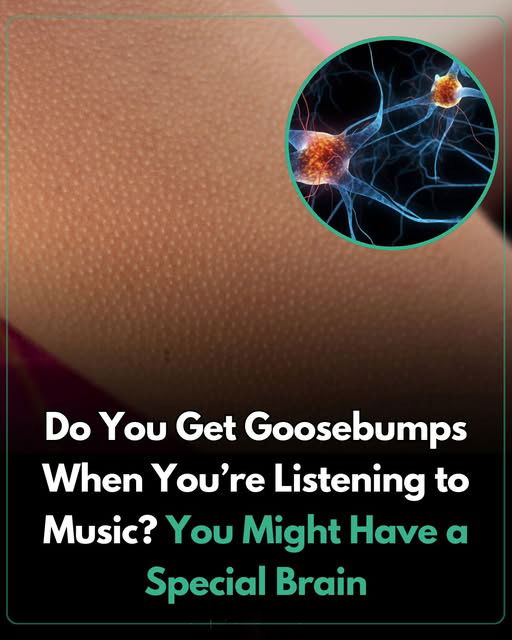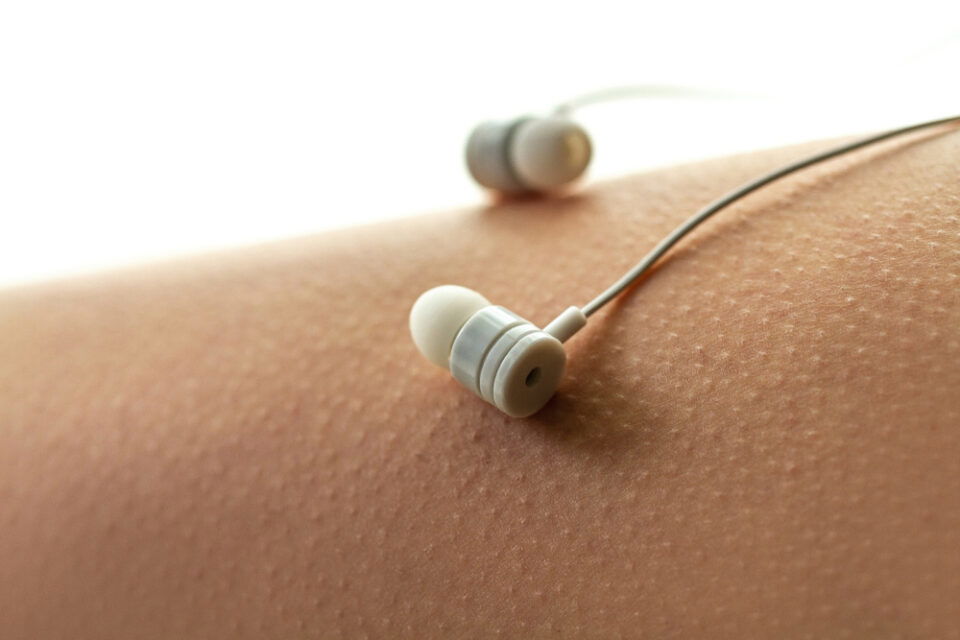
Have you ever been taken away by a song, sending shivers up your spine as the music unfolds? If that’s the case, you might have a unique brain. For years, scientists and psychologists have been fascinated by this strange sensation, commonly known as ‘musical chills’.
According to recent research, persons who experience these shivers have a unique brain activity that distinguishes them from those who do not.
If you’re intrigued about what happens in your head when music moves you, keep reading—there’s much more to it than meets the ear.
What Are Goosebumps and Why Do We Get Them?
Goosebumps, also known as piloerection, are a condition in which small muscles at the base of each hair follicle contract, causing hairs on your skin to rise up.

This physical response is part of the body’s autonomic nerve system, which functions mainly outside of conscious control and is in charge of the fight-or-flight response to perceived dangers or excitement.
The process of developing goosebumps begins in the hypothalamus, a brain area that responds to emotional impulses. When provoked by emotions such as fear, amazement, inspiration, or even frigid temperatures, the hypothalamus sends a signal to the adrenal glands via the autonomic nervous system. These glands subsequently secrete adrenaline (epinephrine), a hormone that causes the arrector pili muscles in the skin to contract.
Music and the Human Brain – What Happens When We Listen?
When you hit play on your favorite song, something amazing happens within your brain. Music, unlike any other art form, can stimulate multiple areas of the brain at the same time.
It activates areas involved in emotion, memory, attention, and even physical action. This extensive activation explains why music may elicit such strong emotional responses, either bringing us to tears or making us feel joyful in a matter of seconds.

When we hear music, sound waves go through our ears and into the auditory cortex, the brain’s primary processing center for sounds. The auditory cortex transmits messages to other brain regions, such as the amygdala (which processes emotions) and the nucleus accumbens (the brain’s pleasure center).
These regions collaborate to produce dopamine, a neurotransmitter that promotes emotions of pleasure and reward. This explains why a perfect note or beat drop can cause an instant surge of happiness or goosebumps.
The Unique Brain Structure of People Who Get ‘Musical Chills’: Key Findings from USC Study
According to recent research, not everyone gets chills when they listen to music, and those who do may have distinct brain wiring.
Alissa Der Sarkissian and Matthew Sachs of the University of Southern California’s Brain and Creativity Institute did a study that shed light on this phenomenon. The researchers examined the brains of people who get goosebumps when they listen to music to those who don’t, and the findings were fascinating.

The study discovered that those who experience musical shivers have more neural connections between the auditory cortex (the region of the brain that processes sound) and areas linked with emotional processing, such as the anterior insular cortex and the medial prefrontal cortex.
These additional fibers facilitate communication between the areas of the brain that control sound perception and those that generate emotional reactions.
Because of this heightened connectedness, persons who experience chills have a unique ability to sense emotions more strongly while listening to music. The stronger the link, the greater the emotional response.
In essence, their brains are constructed to be more sensitive to the emotional power of music, allowing them to feel a symphony of experiences that others do not.















